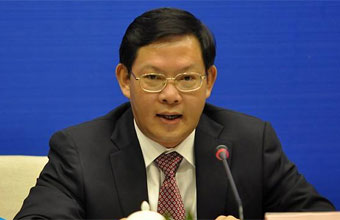Home> Arts and Traditions
Folk dance in Zhanjiang
The local folk art consists of dance, music and sculpture.
Dance can be divided into two genres based on spatial dimension.
The first genre is the plane performance. It features the performance on a two-dimensional stage and has characteristics of the Renlong dance from Donghai Island.
The second genre is the three-dimensional performance. The art form breaks through restraints on a two-dimensional stage and explores vertical space. It's mainly expressed in High-Pile Lion and Wuyingxiong dances.
Renlong Dance
The Renlong dance, which literally means the dance of people and dragon, is the most famous folk dance in Leizhou Peninsula. The dance features distinct rhythm, a powerful drumbeat, and an imposing and inspiring style. There are two branches of Renlong dances on Donghai Island and Shentang.
Wuyingxiong
The dance integrates elements of martial arts. Zhanjiang people drew inspiration from their daily work, and simulated the movements of an eagle and a mystical animal with a dragon head and phoenix tail. It's a popular dance in Lianjiang city.
Nuowu dance
Known to be called a living fossil of dance. The dancers wear ancient masks while dancing. It came from the Central Plains and southern Fujian province, and is now popular in many towns of Leizhou.
Centipede dance
The dance originates from Wushi town, Xuwen county, south of the Leizhou Peninsula. It's usually performed during the Mid-autumn Festival. The dancers look like crawling centipedes while dancing, thus the name Centipede Dance.
Pixiu Dance
The dance is a distinctive folk dance in Wuchuan city's Meilu town. Pixiu is a legendary beast, which is said to be more violent than a lion.

 Print
Print Mail
Mail 5G construction supports Zhanjiang's high-quality development
5G construction supports Zhanjiang's high-quality development
 Acting mayor inspects project construction in Xuwen, Leizhou
Acting mayor inspects project construction in Xuwen, Leizhou Zhanjiang island an "egret paradise"
Zhanjiang island an "egret paradise"  Dancing egrets add vitality to Xiashan
Dancing egrets add vitality to Xiashan